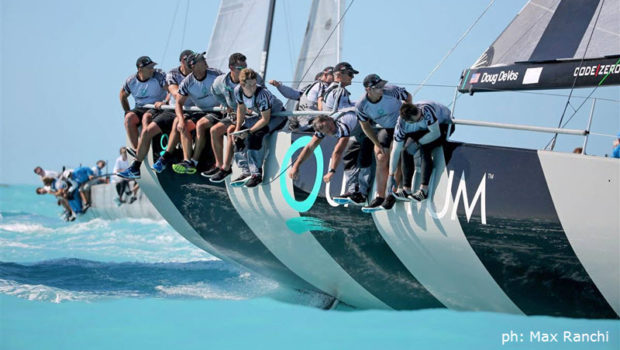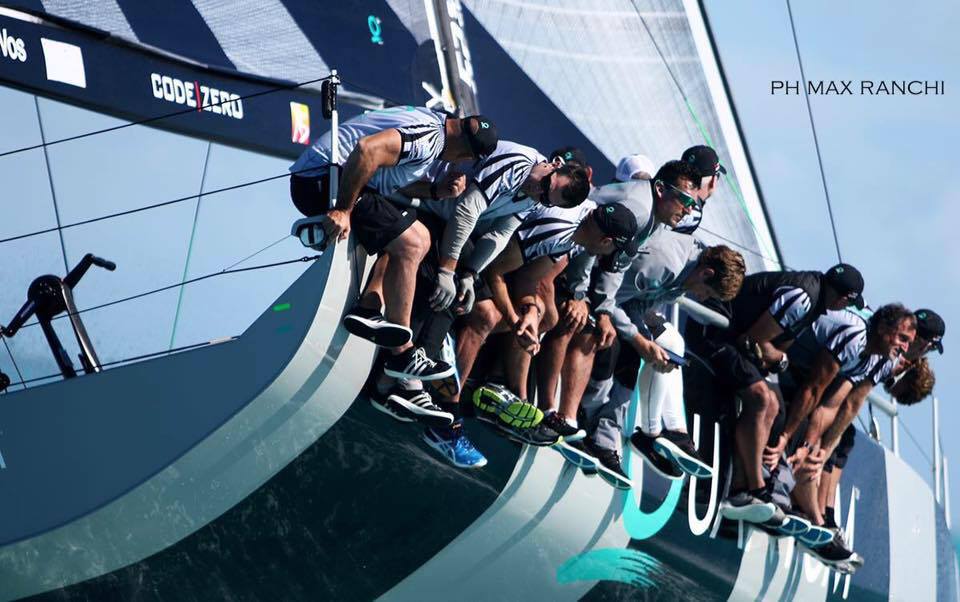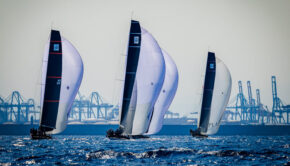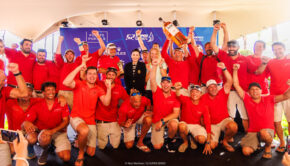Being the New Kid on the Block
Published on January 24th, 2017
Bora Gulari, who competed for an Olympic medal at the Rio 2016 Games, is now the newest member of the TP 52 Quantum Racing. As the most successful team in the most competitive grand prix monohull class, Scuttlebutt editor Craig Leweck checked in with Bora after the team’s win at Quantum Key West Race Week 2017…
What was it like joining the team for Race Week?
I’ve never been with such a professional program where you never felt any politics, it felt like everyone was fighting together, and everyone on the boat is the best at what they are doing. It was mind blowing, in a way, to be part of that.
To give you some perspective, at 41 years, I was the youngest and the newest member of the team. While I did have a prized position as strategist in he afterguard, that did not limit my contributions to the team. I did all the traditional nipper duties such as diving the boat and going up the rig.
It’s been awhile since I felt like such a newbie, but to all newbies out there, you just learn your job and put forth your absolute best effort. That’s the best way to blend into a team. Don’t take anything for granted. All the guys on Quantum Racing have been there and earned it, and now I am counting my lucky stars that I get to be a part of it.
Explain the onboard vibe.
In Key West we had 13 people on the boat. When you get that many people on a boat, to be able to effectively communicate, the team needs to be very disciplined in what is being said. What I witnessed was an economy of conversation. People can’t talk just to talk. This is key, to minimize conversation while maximizing what is being said. This is a big goal for any team that seeks to raise their competitive game.
What was the daily schedule?
– Team breakfast at the crew house starting at 7am.
– Meet with our training group which includes three other teams in our class to have debrief with the coach who would discuss observations from the day before. For 30 to 45 minutes, the coach would discuss notes and photos of sails and rig set-up, plus share tracking data and wind information to analyze the outcome of each race.
– After training team debrief, our team would gather alone for about 15 minutes to discuss the information. This would finish at about 8:45am.
– Meet at the boat at 9am for dock out at 9:15am. There is a full shore team that is extremely professional, plus there are roles amongst the sailing team that overlap with the shore team. For example, there is a sailing team boat captain and shore team boat captain. At dock out, the shore team is effectively handing the boat off to the sailing team.
– On the way out to the race course we meet the coach boat to transfer sails we are going to use. We would then meet with the three other training partners one hour before the start, typically tune upwind for 20 to 30 minutes, then go downwind and set up for three practice starts. Then standby for the start signal.
– Racing begins at 11am, complete two races, return to the harbor around 2pm.
– Work with shore team to put away boat, typically done by 3pm.
– Meet at 7pm for debrief which would include video from the starts and mark roundings, have dinner at 7:30pm.
– As the week progressed I was slipping into bed around 8:30pm.
How does the afterguard function?
The tactician is central to the team and makes the final decisions. As strategist, and being new to the team, I was finding my way on how I can best contribute. My role was more big picture assessment, particular about wind trends. Of course, there is rarely a hard data on what the wind is going to do, so I was sharing what I sensed would happen to the tactician. Not always easy.
The navigator and I would overlap a little as we assessed gains and losses on the fleet, but otherwise the navigator would communicate with the tactician about our position on the course and time to laylines to assist in tactical decisions.
The tactician absorbs and processes a lot of information, plus is working with the trimmers on boat performance. When situations are tight with other boats, tactics and performance modes (ie, pointing higher or lower upwind) must sync to succeed.
What about your future role as helm?
Since I will be steering the boat during the 52 SUPER SERIES when owner Doug DeVos is not available, I was also trying to better understand that job too. I was impressed with the amount of feedback the 52 offered, which is so helpful in keeping the boat at top speed. I have a lot of miles on Melges 24s, and was impressed to find there are a lot of behavior characteristics between the boats.
However, a big difference with the 52 is managing the momentum, as it’s not easy to build momentum and it takes a lot to scrub momentum. Mastering this is critical to starting tactics. Like any other modern boat with skinny foils, you have to focus on increasing speed forward before you increase side loads to the foils. Do it wrong and you go slow and slide sideways.











 We’ll keep your information safe.
We’ll keep your information safe.